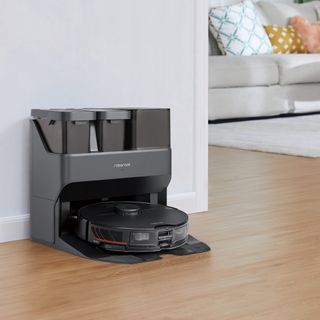Heating and cooling are the single biggest factors of your monthly energy bill, so it makes sense for most people to consider picking up a smart thermostat that better manages the temperature of your home. The Nest Learning Thermostat is the best overall option, offering a sleek and modern design that fits into any home and automated schedule creation based on your habits.
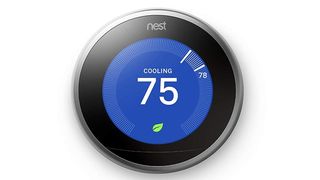
Like most smart thermostats, Nest's offering can be controlled by your phone or through a voice assistant like Google Assistant or Amazon Alexa (though notably, the Learning Thermostat isn't compatible with Apple's HomeKit service). You can set the temperature remotely, or simply rotate the stainless steel dial around the frosted glass display. The Nest Learning Thermostat can also detect when you've left the house to automatically shut down heating and cooling, and resumes things when you return.
The Nest's defining feature, though, is its ability to learn your preferences by keeping track of when you change the temperature throughout the day, along with factors like the current temperature outside of your home, so it can automatically create its own schedule so that you never have to think about it.
It also optimizes energy with Eco Mode, where the Learning Thermostat turns on heating and cooling periodically to maintain optimal settings without wasting power. Nest even keeps track of your energy savings, and provides you with helpful analytics throughout the year.
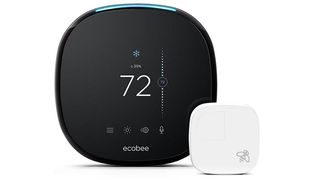
Ecobee is a hugely popular alternative to Nest that offers touch screens on its smart thermostats, with a flatter, more squared off design. You won't get Nest's automatic schedule creation with the Ecobee4, but most of the other features are here.
It can detect when you leave the house and turn off heating/cooling automatically, and the included room temperature sensor comes in handy for homes with multiple floors — an especially good add-on considering the Ecobee4 sits around the same price as the Nest Learning Thermostat. With Alexa built directly into the unit, you can even call out temperature change commands to it without needing a dedicated smart speaker.
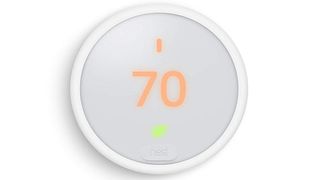
The Thermostat E is a great alternative to Nest's higher-end model for considerably cheaper. The display isn't as sharp and the Thermostat E doesn't work with *quite* as many HVAC systems, but from Auto Away to Eco Mode and automatic schedule creation, it's a nearly identical experience to the Learning Thermostat in a white plastic body.
Like its more expensive counterpart, the Thermostat E is eligible for rebates through most participating power companies, and the lower cost opens you up to buy Nest's Temperature Sensors for keeping track of the temperature throughout your house. It's simple to operate, using the same rotating bezel design, and the white hardware might blend in better with some homes.
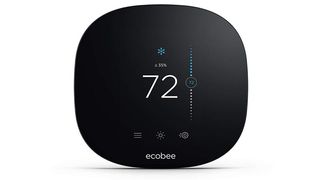
Even the most affordable smart thermostat goes a long way over the ones included with your home. The Ecobee3 Lite doesn't have Alexa built in like the Ecobee4, nor does it include a room sensor, but you can still create schedules and control the thermostat from your phone or voice assistant. Unlike Nest's thermostats, the Ecobee3 Lite is compatible with Apple's HomeKit.
Visually, it's nearly indistinguishable from the more premium Ecobee4, with the same full-color touch screen interface. This is easily the best value smart thermostat around, making it easy to quickly make your money back on energy bill savings.
Bottom line
Even without an included room sensor, the Nest Learning Thermostat is hard to beat with its sleek aluminum design, Google Assistant integration, and automatic schedule creation based on your usage habits. The screen turns on as you walk up to the thermostat, and you can easily adjust the temperature manually by rotating the dial around the display. With remote control via your phone, you'll never have to come home to an icebox in the winter — or a sauna in the summer — again.
As we previously mentioned, the highlight feature is still its learning abilities, which allows it to track your habits and create a schedule for you. This not only makes your life easier, but can save you money by helping you to conserve energy.



